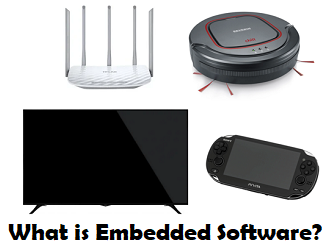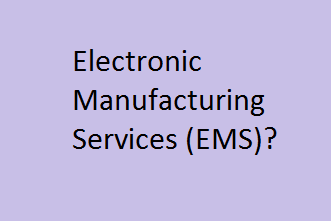This website uses cookies so that we can provide you with the best user experience possible. Cookie information is stored in your browser and performs functions such as recognising you when you return to our website and helping our team to understand which sections of the website you find most interesting and useful.
30 Examples of Embedded Systems
30 Examples of Embedded Systems
Embedded systems are specialized computing systems that perform dedicated functions within larger mechanical or electrical systems. They are designed to operate with minimal human intervention and are often embedded as part of a larger device. In this article, we will explore 30 examples of embedded systems, highlighting their applications, functionalities, and significance in modern technology.
1. Microcontrollers in Home Appliances
Microcontrollers are embedded in various home appliances such as washing machines, microwaves, and refrigerators. They control functions like temperature settings, cycle times, and user interfaces, making appliances more efficient and user-friendly.
2. Automotive Control Systems
Modern vehicles are equipped with numerous embedded systems that manage everything from engine performance to safety features. Systems like Anti-lock Braking Systems (ABS) and Electronic Stability Control (ESC) rely on embedded technology to enhance vehicle safety and performance.
3. Smart Thermostats
Smart thermostats, such as the Nest Learning Thermostat, utilize embedded systems to learn user preferences and optimize heating and cooling schedules. They can be controlled remotely via smartphones, providing convenience and energy savings.
4. Medical Devices
Embedded systems play a crucial role in medical devices like pacemakers, insulin pumps, and diagnostic equipment. These systems monitor patient health and deliver precise treatments, significantly improving patient care and outcomes.
5. Industrial Automation Systems
In manufacturing, embedded systems are used in robotics, conveyor belts, and process control systems. They enhance productivity by automating repetitive tasks and ensuring consistent quality in production lines.
6. Consumer Electronics
Devices like smartphones, tablets, and smart TVs are packed with embedded systems that manage various functions, including touch interfaces, multimedia playback, and connectivity options. These systems are essential for delivering a seamless user experience.
7. Smart Home Devices
Smart home devices, such as security cameras, smart locks, and lighting systems, utilize embedded systems to provide enhanced security and convenience. They can be controlled remotely and often integrate with other smart home ecosystems.
8. Wearable Technology
Wearable devices like fitness trackers and smartwatches are equipped with embedded systems that monitor health metrics, track physical activity, and provide notifications. These systems enable users to stay connected and maintain their health.
9. Drones
Drones use embedded systems for navigation, stabilization, and data collection. These systems allow drones to perform complex tasks such as aerial photography, surveying, and delivery services with precision and reliability.
10. Network Routers
Network routers are embedded systems that manage data traffic between devices on a network. They ensure efficient data transmission and provide security features like firewalls and VPN support.
11. Smart Meters
Smart meters are embedded systems used in energy management. They monitor and report energy consumption in real-time, allowing consumers to track usage and utilities to optimize energy distribution.
12. Gaming Consoles
Gaming consoles like the PlayStation and Xbox are equipped with embedded systems that handle graphics processing, user input, and online connectivity. These systems provide immersive gaming experiences and support complex game mechanics.
13. Digital Cameras
Digital cameras utilize embedded systems for image processing, autofocus, and user interface management. These systems enable high-quality photography and video recording, making them essential for both amateur and professional photographers.
14. HVAC Systems
Heating, ventilation, and air conditioning (HVAC) systems use embedded technology to regulate indoor climate. They monitor temperature, humidity, and air quality, ensuring comfort and energy efficiency in buildings.
15. Smart Agriculture
Embedded systems are transforming agriculture through precision farming technologies. Systems like soil moisture sensors and automated irrigation controllers help farmers optimize resource use and increase crop yields.
16. Traffic Management Systems
Traffic management systems use embedded technology to monitor and control traffic flow. They can adjust traffic signals based on real-time conditions, reducing congestion and improving road safety.
17. Robotics
Robots in various industries, from manufacturing to healthcare, rely on embedded systems for navigation, task execution, and interaction with humans. These systems enable robots to perform complex tasks autonomously.
18. Smart Grids
Smart grids utilize embedded systems to enhance the efficiency and reliability of electricity distribution. They monitor energy usage, integrate renewable energy sources, and enable real-time communication between utilities and consumers.
19. Point of Sale (POS) Systems
POS systems in retail environments are embedded systems that manage transactions, inventory, and customer data. They streamline the checkout process and provide valuable insights into sales trends.
20. Security Systems
Embedded systems are integral to modern security systems, including alarm systems, surveillance cameras, and access control systems. They provide real-time monitoring and alerts, enhancing safety and security.
21. Smart Watches
Smartwatches are wearable devices that incorporate embedded systems to track fitness, monitor health metrics, and provide notifications. They serve as an extension of smartphones, offering convenience on the go.
22. E-Readers
E-readers like the Amazon Kindle use embedded systems to manage display technology, battery life, and user interfaces. They provide a portable and convenient way to read digital books and documents.
23. Home Security Robots
Home security robots are equipped with embedded systems that allow them to patrol properties, detect intrusions, and provide real-time video feeds to homeowners. They enhance security through automation and surveillance.
24. Fitness Equipment
Modern fitness equipment, such as treadmills and stationary bikes, often includes embedded systems that track workouts, monitor heart rates, and provide interactive training programs. These systems enhance the user experience and promote fitness goals.
25. Smart Refrigerators
Smart refrigerators are equipped with embedded systems that monitor food inventory, suggest recipes, and even allow remote temperature control. They help reduce food waste and improve meal planning.
26. Voice Assistants
Devices like Amazon Echo and Google Home utilize embedded systems to process voice commands, control smart home devices, and provide information. They represent a significant advancement in human-computer interaction.
27. Telecommunication Systems
Telecommunication systems, including mobile phones and satellite communication devices, rely on embedded systems for signal processing, data transmission, and user interface management. They enable global communication and connectivity.
28. Smart Locks
Smart locks use embedded systems to provide keyless entry and remote access control. They enhance home security by allowing users to monitor and manage access to their properties from anywhere.
29. Environmental Monitoring Systems
Embedded systems are used in environmental monitoring devices to track air quality, water quality, and weather conditions. These systems provide valuable data for research and public health initiatives.
30. Smart Lighting Systems
Smart lighting systems utilize embedded technology to control lighting based on occupancy, time of day, and user preferences. They enhance energy efficiency and provide customizable lighting solutions for homes and businesses.
Conclusion
Embedded systems are an integral part of our daily lives, enhancing the functionality and efficiency of a wide range of devices and applications. From home appliances to advanced medical devices, these systems enable automation, improve user experiences, and contribute to the advancement of technology. As technology continues to evolve, the role of embedded systems will only become more significant, paving the way for smarter and more connected environments.
Understanding the various applications of embedded systems can help us appreciate their impact on our lives and the future of technology. Whether in our homes, vehicles, or workplaces, embedded systems are shaping the way we interact with the world around us.
















